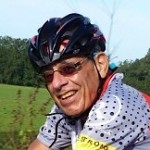
High blood pressure puts you at increased risk for suffering a heart attack or stroke and damaging every organ in your body. Lowering high blood pressure helps to protect you from these complications (JAMA, 1970;213:1143-52). Blood pressure is usually at its lowest at bedtime. Your resting blood pressure is too high if it is:
• above 120/80 when you are lying in bed before you go to sleep at night or before you get up in the morning, or
• above 140/100 at other times.
Research more than 60 years ago showed that regular exercise helps to protect you from heart disease and premature death (Lancet, 1953;2:1111-20), and the more regularly you exercise, the greater the protection (N Engl J Med, 1984;311:874-7). Regular exercisers have significantly lower blood pressures than non-exercisers (Am J Hypertens, 1989;2:60), and those who do not exercise regularly are at much higher risk for developing high blood pressure in the future (JAMA, 1984;252:487-90).
Blood Pressure During Exercise
Your systolic (top number) blood pressure usually rises as soon as you start to exercise and drops a little bit while you exercise at the same intensity (J Appl Physiol, 1997;82(4):1237 – 1243). It is normal for systolic blood pressure to rise to between 160 and 200, but as you continue to increase the intensity of exercise, your blood pressure can rise much higher (Hypertension, Dec 18;2018;71:229–236). When you run at a comfortable pace, your blood pressure can normally rise to 200/70. When a regular weightlifter performs a maximum-effort leg press, his blood pressure can rise as high as 480/350 (J Appl Physiol, Mar, 1985;58(3):785-90). A general rule of thumb is that having a systolic blood pressure greater than 200 during casual exercise can sometimes be abnormal and should be checked by your doctor.
Warning Signs During and After Exercise
Check with your doctor if you suffer the following symptoms during or after exercise, or independent of exercise:
• chest pain
• irregular heartbeats
• abnormal thumping in your chest
• dizziness
• blurred vision
• nausea.
Other warning signs include:
• systolic blood pressure greater than 220 with casual exercise or greater than 150 a few minutes after you stop exercising.
• a drop in blood pressure during exercise
• your blood pressure does not rise during exercise
Blood Pressure After Exercise
Blood pressure for people both with and without high blood pressure usually drops a little for up to an hour after they finish exercising and then blood pressure returns to its previous level after that (Hypertension 1991;18:211-215). The fitter you are, the faster your blood pressure returns to its resting level. Having a systolic blood pressure that does not drop after you stop exercising puts you at increased risk for heart disease (Am Fam Physician, Oct 1, 1998;58(5):1126-1130). Doctors use a ratio of systolic blood pressure three minutes into the recovery phase of a treadmill exercise test divided by systolic blood pressure at peak exercise. A ratio above 0.9 means that you are at increased risk. On the other hand, having a blood pressure after exercise below 90/60 is usually abnormal. In general, your blood pressure should return to normal within several hours of a workout. Even then, you might notice that your blood pressure doesn’t return to exactly what it was before exercise. That is because it is normal for blood pressure to drop slightly within a few hours of exercise.
Exercise for People Who Have High Blood Pressure
Exercise is often prescribed as part of the treatment for high blood pressure and it is usually safe for people with high blood pressure to exercise. However many people who have high blood pressure already have heart disease and do not know it. People who have high blood pressure should check with their doctors, particularly if they are starting or increasing an exercise program.
Points to Remember
• High blood pressure puts you at increased risk for heart disease.
• Exercise helps to lower high blood pressure and to prevent heart disease.
• Blood pressure generally rises after you start to exercise and drops when you stop exercising.
• An hour after you stop exercising, blood pressure drops to its pre-exercise level.
• Having blood pressure that does not drop after you stop exercising puts you at increased risk for high blood pressure and heart disease.
Dr. Gabe Mirkin is a Villager. Learn more at www.drmirkin.com

